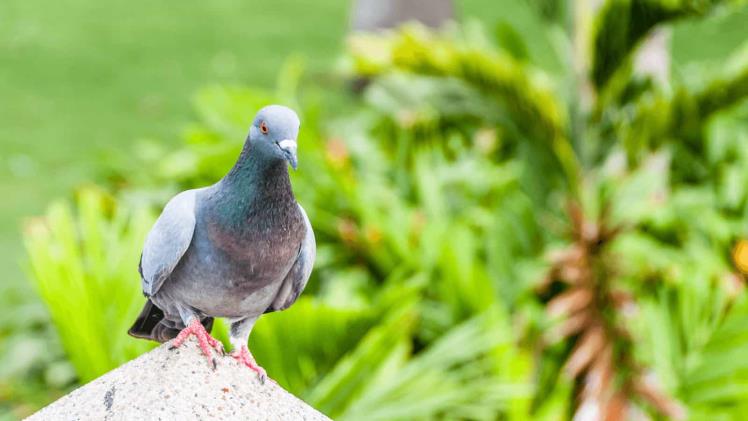Birds are a beautiful and essential part of the natural world, adding color, song, and vitality to our surroundings. However, when these winged creatures begin to encroach upon our properties in large numbers, they can become a significant nuisance and even pose health and safety risks.
Pest birds can cause damage to buildings, vehicles, and landscaping, while also creating unsightly messes that are difficult to clean. To strike a balance between coexisting with nature and protecting our properties, effective pest bird control measures are essential. Here are the reasons why pest bird control is necessary and explore various methods to keep these feathered intruders at bay.
The Problems Caused by Pest Birds
Pest birds, such as pigeons, sparrows, starlings, and seagulls, can lead to a range of issues that impact our living and working spaces:
Property Damage: Birds can cause significant structural damage to buildings by perching, nesting, and roosting on ledges, roofs, and gutters. Their droppings contain corrosive substances that can degrade surfaces over time, leading to deterioration and costly repairs. Thus, you need pest bird control to protect your property from damage.
Health Concerns: Bird droppings can carry a host of diseases, fungi, and parasites, posing health risks to humans and pets. These hazards can be especially problematic in areas where people congregate, such as parks, sidewalks, and public buildings.
Slip and Fall Hazards: Accumulated bird droppings create slippery surfaces that can lead to slip and fall accidents, potentially resulting in injuries and liability issues.
Contaminated Water Sources: Bird droppings can contaminate water sources, making them unsuitable for consumption and recreation. This is particularly concerning in areas where water bodies are used for fishing, boating, and swimming.
Damage to Vegetation: Birds can damage gardens and crops by eating fruits, seeds, and young plants, impacting agricultural productivity and backyard landscaping efforts.
Noise Disturbances: Large bird populations, such as flocks of starlings or pigeons, can create significant noise disturbances that affect both residential and commercial areas.
Effective Pest Bird Control Methods
To address the problems caused by pest birds, it’s crucial to implement effective pest bird control measures. Here are some methods to consider:
Exclusion: Prevent birds from accessing your property by using physical barriers like netting, spikes, and wire systems. These deterrents make it difficult for birds to land, roost, or nest on ledges, roofs, and other surfaces.
Habitat Modification: Remove potential nesting sites, such as old structures, debris, and unused equipment. Trim trees and shrubs to limit perching spots near buildings.
Sound and Visual Deterrents: Devices that emit distress calls or predator sounds can effectively discourage birds from congregating on your property. Visual deterrents like reflective tape, scarecrows, and decoys can also help create an inhospitable environment for birds.
Chemical Repellents: Non-toxic chemical repellents can be applied to surfaces to deter birds from landing. These repellents create an uncomfortable sensation on their feet, discouraging them from roosting.
Professional Services: Engaging a professional pest control service that specializes in bird management can provide a comprehensive and effective solution tailored to your property’s specific needs.
Trapping and Removal: In some cases, trapping and removing pest birds may be necessary. However, this approach should be used as a last resort and in compliance with local regulations.
Education and Awareness: Promote public awareness about the importance of responsible bird feeding practices and avoiding unintentional feeding through open garbage containers.
Long-Term Strategies for Sustainable Bird Management
To achieve a sustainable and effective approach to pest bird control, it’s essential to consider long-term strategies that address the root causes of bird infestations:
Property Maintenance: Regular property maintenance can prevent bird infestations by eliminating potential nesting sites, food sources, and water sources. Repairing leaks, sealing openings, and keeping garbage containers tightly closed can discourage birds from seeking shelter and sustenance on your property.
Education and Awareness: Promote community education and awareness campaigns about responsible bird feeding practices. Discourage the feeding of pest birds, which can lead to larger populations and more significant problems.
Collaboration: Work together with neighbors, local businesses, and community organizations to implement consistent bird control measures across a broader area. A coordinated effort can have a more significant impact on reducing pest bird populations.
Regular Monitoring: Regularly monitor your property for signs of bird activity and take immediate action if you notice an increase in pest bird populations. Early intervention can prevent infestations from becoming more severe and challenging to manage.
Balancing our desire to coexist with nature while protecting our properties from the adverse effects of pest birds requires proactive and strategic measures. By employing a combination of exclusion techniques, habitat modification, and innovative deterrents, we can significantly reduce the impact of pest birds on our homes, businesses, and public spaces. It’s essential to remember that humane and ethical approaches to pest bird control are crucial to maintaining the delicate balance between human needs and the natural world. By taking action to prevent pest bird infestations, we can create safer, cleaner, and more enjoyable environments for everyone.

